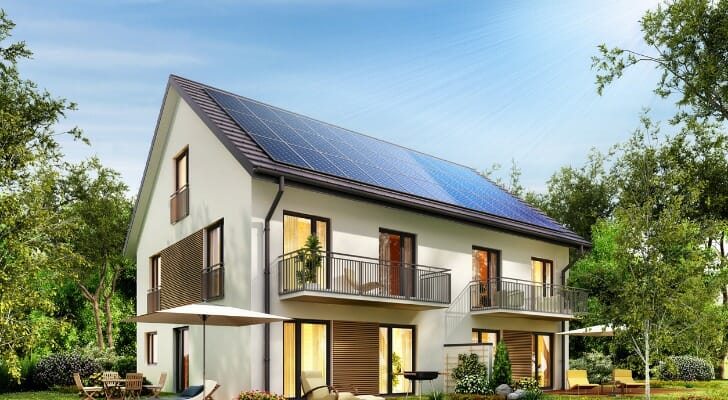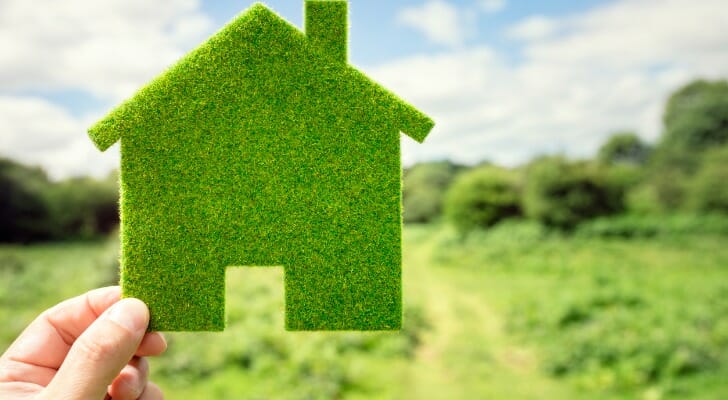 Homeowners spend thousands of dollars a year on utility bills, and that figure is rising. The Energy Efficient Mortgage (EEM) program aims to help families save on their bills by helping to finance energy-efficient improvements on both new and existing homes.
Homeowners spend thousands of dollars a year on utility bills, and that figure is rising. The Energy Efficient Mortgage (EEM) program aims to help families save on their bills by helping to finance energy-efficient improvements on both new and existing homes.
A financial advisor could help you best determine if an energy efficient mortgage is a solid choice for you financially, but here’s a guide if you’d like a place to start your research.
What is an Energy Efficient Mortgage?
An energy efficient mortgage is a financial loan product that allows homeowners to bundle the cost of energy-efficient improvements with the cost of purchasing or refinancing a home. Traditional mortgages do not allow you to add home improvement costs to the loan amount. This is because financial institutions do not want to take on the risk of giving more money to a potential homeowner than the value of the actual home – future improvements don’t count.
Insured by the Federal Housing Administration (FHA), however, energy efficient mortgages provide those additional funds on top of your mortgage to finance energy-efficient upgrades. The idea is that an energy-efficient home will have lower operating costs, and so the home will be more affordable (and comfortable) for the homeowners over time.
What are the Benefits of an Energy Efficient Mortgage?

Under the EEM program, the FHA insures an approved mortgage to allow borrowers to add energy-efficiency improvement costs to their loan. This lets homeowners finance relevant home upgrades without resorting to higher-interest home improvement loans or even draining savings in order to benefit from energy efficiency.
Let’s say you’re looking to buy or refinance a home built in 1960. The home could use new insulation in the ceiling, floor, and furnace ducts, as well as a new, programmable thermostat. A home energy assessment on the home recommends $2,300 in improvements. Some people could certainly pay that out of pocket, but not everyone simply has the cash on hand to handle that cost. You could then charge it to a credit card or apply for a personal loan, which charges you a high interest rate and requires repayment within a close time frame. Or, you can take advantage of a FHA loan specifically targeted for home improvements.
Requirements for an Energy Efficient Mortgage
There are few FHA requirements to qualify for an energy efficient mortgage. Borrowers must first qualify for a mortgage through their lender based on minimum financial institution requirements. Additional energy efficient mortgage requirements include:
- A qualified energy rater, assessor, or auditor must conduct a home energy assessment. This assessment is the basis for the energy savings value, or the “improvement budget.”
- The maximum amount of the energy package to be financed cannot exceed 5% of the home’s adjusted value, 115% of the median area price of a single family home, or 150% of the national mortgage limit (whichever is lowest).
Other Types of Energy Efficient Mortgages

There are a number of EEM programs, both federally insured and offered by the conventional secondary mortgage market.
Fannie Mae and Freddie Mac offer conventional energy efficient mortgage loans, which function similarly to the FHA EEM. Minimum requirements are generally higher, however, given the base differences between a conventional and FHA loan.
The U.S. Department of Agriculture (USDA) also provides low- and moderate-income households in rural areas with a guaranteed loan program. Eligible applicants may purchase, build, improve, or even relocate a dwelling in rural areas with 100% financing.
Qualified military personnel specifically may benefit from an EEM guaranteed by the U.S. Department of Veterans Affairs (VA). This special loan entitles borrowers to a certain amount of VA-guaranteed funds, which in many cases means borrowers may not have to put any money down at all.
Bottom Line
Buying a new home or refinancing can be a complicated process. With so many financial institutions offering many different types of loans, choosing the best mortgage loan for your circumstances could be difficult without direction. It’s helpful to fully research your options prior to applying, as well as understanding the impact your mortgage can have on your finances.
In short, if you’re looking to apply for a mortgage and you’d also like to upgrade your home’s energy efficiency, an energy efficient mortgage could be a financially-smart option for your household.
Tips For Getting a Mortgage
- Not sure which energy efficient mortgage is the right choice for you? Consider speaking with a qualified financial advisor. SmartAsset’s free tool matches you with up to three financial advisors in your area, and you can interview your advisor matches at no cost to decide which one is right for you. If you’re ready to find an advisor who can help you achieve your financial goals, get started now.
- Use SmartAsset’s free mortgage calculator to get a good estimate of how much house you can afford.
- The mortgage rate environment is more volatile now than ever. Check out SmartAsset’s mortgage rates table to get a better idea of what the market looks like right now.
Photo credit: ©iStock.com/piranka, ©iStock.com/sl-f, ©iStock.com/BrianAJackson